Welcome to our in-depth exploration of the future of sustainable construction. In an era where the world is increasingly grappling with the impacts of climate change, the need to prioritise more eco-conscious and sustainable practices in the construction industry has become more pressing than ever. In this article, we’ll take a detailed look at the latest trends and predictions for the future of sustainable construction, from eco-friendly building materials to renewable energy, sustainable infrastructure development, and more.
Key Takeaways
- The construction industry is evolving to prioritise sustainability and minimise environmental impact
- From eco-friendly building materials to renewable energy and sustainable infrastructure development, there are many ways for the industry to become more sustainable
- Government policies and incentives are also playing a crucial role in driving the shift towards more environmentally conscious construction practices
Eco-Friendly Building Materials
In sustainable construction, the use of eco-friendly building materials is crucial for reducing the industry’s environmental impact. Green construction practices involve selecting materials with a lower carbon footprint, longer lifespan, and higher recyclability, among other factors.
Bamboo is a great example of a sustainable building material that has gained popularity in recent years. It is a fast-growing and highly renewable resource, making it an eco-friendly alternative to traditional timber. Bamboo is also incredibly durable and versatile, making it suitable for use in a wide range of construction applications.
Recycled steel is another sustainable option that is becoming increasingly common in construction. Steel is one of the most recycled materials in the world, and using recycled steel in construction can significantly reduce carbon emissions. Recycled steel is also highly durable and strong, making it an excellent choice for building structures.
Rammed earth is a sustainable building material that has been used for centuries but is now enjoying a resurgence in popularity. It involves packing a mixture of soil, gravel, and other organic materials into molds to create sturdy and energy-efficient walls. Rammed earth is highly durable and has excellent thermal properties, making it a popular choice for sustainable construction projects.
Green roofs are another example of an eco-friendly building material that is gaining traction in sustainable construction. A green roof involves covering a roof with vegetation, which provides a range of environmental benefits, including improved air quality, reduced stormwater runoff, and enhanced insulation.
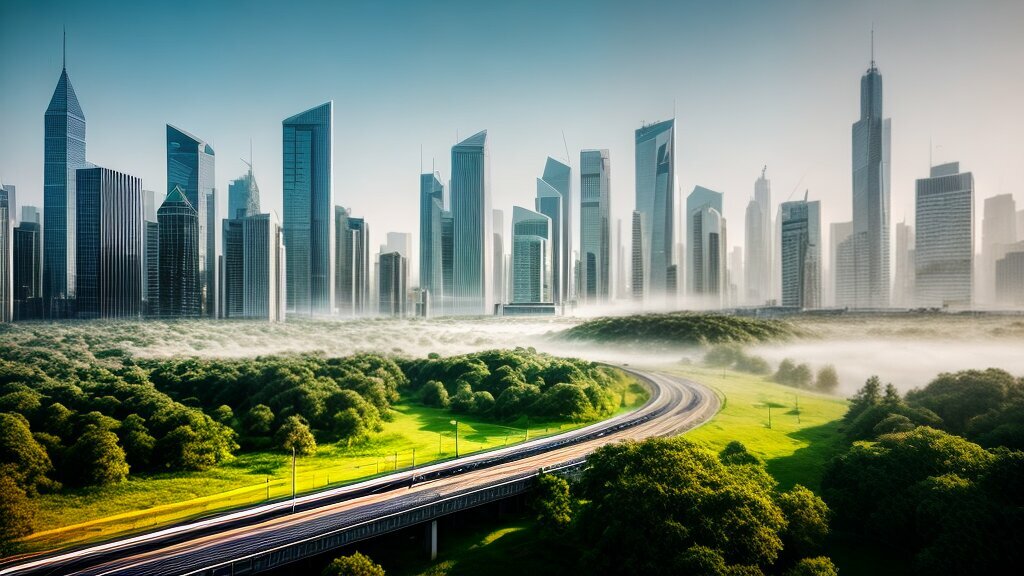
These are just a few examples of the many eco-friendly building materials available to architects and builders today. By prioritising the use of sustainable materials, construction can become a more environmentally friendly industry, helping to build a better future for generations to come.
Renewable Energy in Construction
The use of renewable energy sources is becoming increasingly popular in the construction industry as companies strive to reduce their carbon footprint and decrease reliance on fossil fuels. One of the most effective ways to achieve this is by integrating renewable energy technologies into construction projects.
Solar power is one of the most widely used renewable energy sources in construction. By installing solar panels on roofs or in open areas, buildings can generate a significant amount of their own energy and reduce their reliance on the grid. In addition to reducing carbon emissions, using solar power can also result in significant cost savings over time.
Wind power is another popular option for sustainable construction. Wind turbines can be installed on building rooftops or in other open areas to generate energy. While wind power is currently less commonly used than solar power, it has significant potential as a renewable energy source.
Advantages of Renewable Energy in Construction
There are several advantages to using renewable energy sources in construction:
- Reduced carbon emissions and environmental impact
- Lower energy costs and increased energy independence
- Increased property values and marketability for eco-conscious buildings
- Boosted public relations and improved reputation for environmentally responsible companies
As a result, there has been a growing trend towards using renewable energy in construction, and it is likely to become even more popular as technology continues to improve and become more affordable.
Challenges of Renewable Energy in Construction
While there are many benefits to using renewable energy in construction, there are also several challenges that must be addressed. One of the main challenges is the upfront cost of installing renewable energy technologies, which can be prohibitive for many companies. However, the long-term cost savings and environmental benefits generally outweigh the initial investment.
Another challenge is the limited availability of some renewable energy sources in certain regions. For example, wind power may not be a viable option in urban areas where buildings are closely packed together. However, as technology continues to improve, it is likely that more solutions will become available to overcome these challenges.

Overall, the integration of renewable energy sources into construction projects is a promising trend that is likely to continue in the years to come. As society becomes more focused on sustainability and the environment, it is essential that the construction industry adapts to meet these changing expectations and priorities.
Sustainable Building Design
Sustainable building design is a crucial aspect of eco-conscious architecture. The goal of sustainable building design is to minimize the environmental impact of buildings by incorporating renewable resources, reducing waste, and optimizing energy efficiency.
Architects and designers are utilizing a range of sustainable building design techniques to create more environmentally friendly structures. Some of these techniques include passive design, which uses natural ventilation, shading, and orientation to regulate temperature and lighting in a building. Additionally, green roofs and walls are becoming popular, which help to reduce the heat island effect and improve air quality.
Another key aspect of sustainable building design is the use of materials that have a low environmental impact. This includes materials that are sustainably sourced, have a high level of recycled content, or can be easily repurposed or recycled at the end of the building’s life. Some examples of eco-friendly building materials include bamboo, recycled steel, and reclaimed wood.
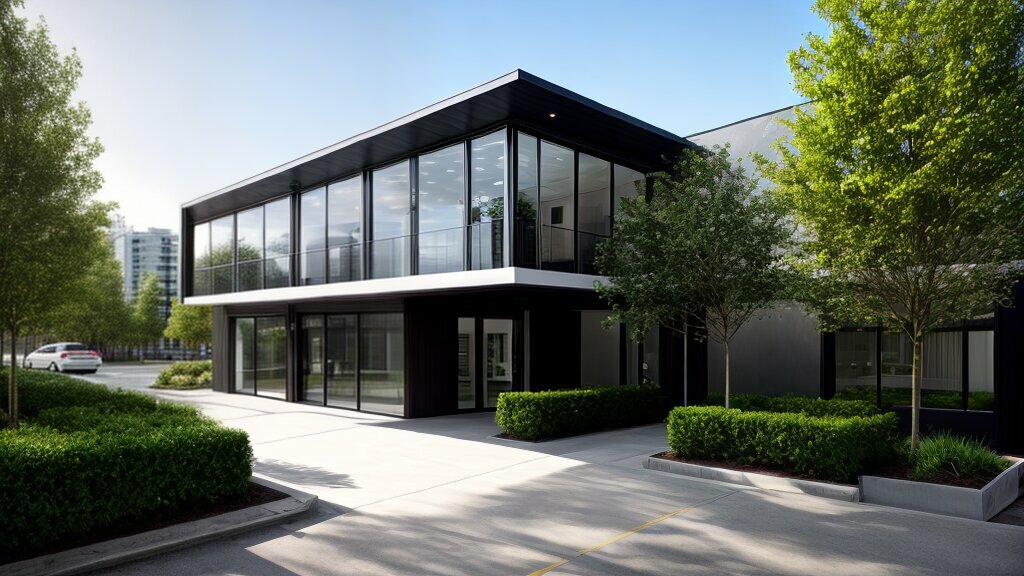
Sustainable building design is not only beneficial for the environment, but it also has economic benefits. Buildings that are designed with sustainability in mind can reduce energy costs, minimize waste, and increase the longevity of the building. Additionally, sustainable building design can enhance the productivity and well-being of occupants by creating a healthier indoor environment.
Overall, sustainable building design is a crucial aspect of creating a more sustainable future. Architects and designers have an important role to play in prioritizing sustainability in their projects, and by doing so, they can contribute to a more environmentally conscious and responsible built environment.
Low Carbon Construction Techniques
As the construction industry continues to grow, there is an increasing need for sustainable construction methods that minimize the environmental impact of building activities. One way to achieve this is through the use of low carbon construction techniques.
Efficient waste management is an important aspect of low carbon construction. By reducing waste and recycling materials, construction projects can minimize their carbon footprint. Additionally, sustainable transportation methods, such as the use of electric vehicles and bikes, can further reduce the environmental impact of construction activities.
Another low carbon construction technique is the use of materials with a low embodied carbon. This refers to the amount of greenhouse gases emitted during the production and transportation of the material. Options include using locally sourced and recycled materials, as well as innovative products like cross-laminated timber (CLT) and bamboo.
| Low Carbon Construction Techniques: |
Benefits: |
| Efficient waste management |
Reduced carbon footprint |
| Sustainable transportation methods |
Minimised environmental impact |
| Use of materials with low embodied carbon |
Reduced greenhouse gas emissions |
“By reducing waste and recycling materials, construction projects can minimize their carbon footprint”
Low carbon construction techniques are becoming increasingly popular as companies and consumers alike become more environmentally conscious. By prioritising sustainability in construction projects, the industry can move towards a more eco-friendly future.
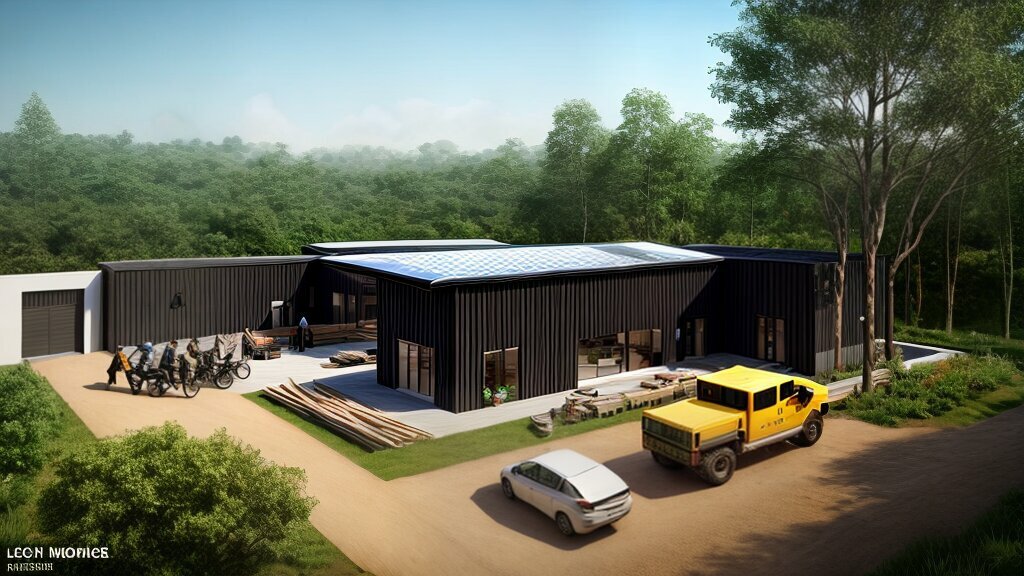
Sustainable Infrastructure Development
As cities and countries continue to expand and develop, there is an increasing need for infrastructure that can support sustainable growth and development. Sustainable infrastructure development involves creating infrastructure that is designed to minimize environmental impact, reduce carbon emissions, and increase resilience to natural disasters.
One example of sustainable infrastructure development is the construction of green roofs, which are covered with vegetation and can help absorb excess rainwater, reduce the urban heat island effect, and improve air quality. Another example is the use of permeable pavement, which allows rainwater to seep through the surface and be absorbed into the ground, reducing the risk of flooding and improving water quality.
Increasingly, infrastructure projects are being designed with sustainability in mind, such as public transportation that uses electric or hybrid buses, or bike lanes and pedestrian walkways that encourage sustainable modes of transportation.
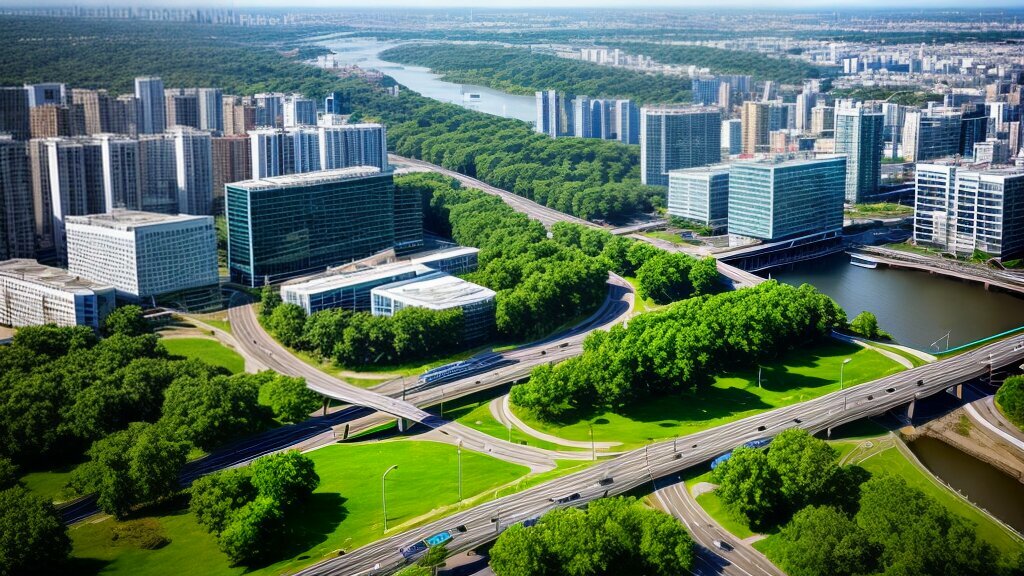
According to the Global Infrastructure Hub, sustainable infrastructure development is essential for achieving a low-carbon, climate-resilient future. By prioritizing sustainable infrastructure, cities and countries can reduce carbon emissions and build a more sustainable future for generations to come.
Environmentally Friendly Construction Technologies
Advancements in technology are playing a crucial role in the move towards sustainable construction practices. From the use of 3D printing to smart building systems, there are several innovative technologies that are making construction more environmentally friendly and efficient.
One of the most promising technologies is 3D printing, which has the potential to drastically reduce waste and material usage in construction. By printing parts on-site, 3D printing can eliminate the need for transportation of materials and cut down on excess waste. This technology also allows for more complex and intricate designs, which can lead to more efficient use of space and materials.
Smart building systems are another key technology in sustainable construction. These systems use sensors to collect data on a building’s energy consumption, occupancy, and other metrics, allowing for better management of resources and energy usage. With the use of these systems, buildings can be designed to be more energy-efficient and have lower carbon footprints.
Green building certifications, such as LEED and BREEAM, are also becoming more widespread in the construction industry. These certifications encourage and recognize environmentally friendly building practices, and are becoming increasingly sought-after by clients and investors. Building to these standards promotes the use of sustainable materials and construction techniques, as well as the implementation of green building technologies.
It is important to note that the adoption of environmentally friendly construction technologies requires significant investment and education. However, the long-term benefits in terms of reduced costs and environmental impact make it a worthwhile investment.
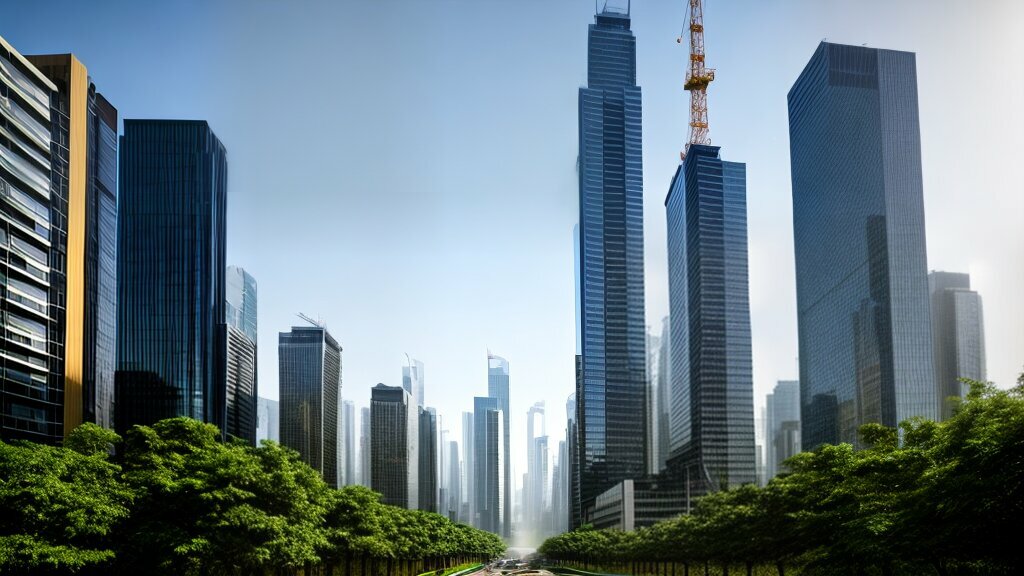
“Advancements in technology are playing a crucial role in the move towards sustainable construction practices.”
The Role of Government Policies and Regulations
Government policies and regulations play a crucial role in driving sustainable construction practices. With the increasing urgency to combat climate change, many governments around the world are implementing incentives for green building projects and enforcing energy efficiency standards.
For example, in the UK, the government has introduced the Green Homes Grant, a scheme that provides homeowners with vouchers to make energy-efficient improvements to their homes. In the US, the Department of Energy has established the Building Technologies Office, which works with industry and academia to research and develop energy-efficient building technologies.
Additionally, many countries have adopted the Leadership in Energy and Environmental Design (LEED) certification system, which provides a framework for sustainable building design, construction, and operation. Buildings that meet the LEED standards are recognized for their environmental performance and can receive various incentives, including tax credits and zoning allowances.
However, there is still a long way to go in terms of widespread adoption of sustainable construction practices. Governments must continue to prioritize sustainability and implement policies and regulations that incentivise eco-friendly building practices.
As the construction industry continues to evolve, it is essential that government policies and regulations keep pace with new technological developments and innovations. By doing so, we can ensure a sustainable future for the construction industry and the planet as a whole.

Conclusion
The future of sustainable construction looks bright, with a growing emphasis on eco-friendly building materials, renewable energy sources, sustainable building design, low carbon construction techniques, sustainable infrastructure development, and environmentally friendly construction technologies. Governments around the world are implementing policies and regulations that incentivize and promote green building practices, and the construction industry is responding with innovative solutions that prioritize sustainability and resilience.
As we look towards the future of construction, it is clear that sustainability must remain a top priority. By embracing sustainable construction practices, we can help to minimize our impact on the environment and create a more sustainable and resilient future for generations to come.
FAQ
Q: What is the future of sustainable construction?
A: The future of sustainable construction is focused on integrating environmentally friendly practices and technologies into building projects to reduce carbon emissions and minimize the impact on the planet.
Q: Why is it important to use eco-friendly building materials?
A: Using eco-friendly building materials is vital in sustainable construction as it helps to promote green construction practices and reduce the negative effects of traditional construction materials on the environment.
Q: How are renewable energy sources integrated into construction projects?
A: Renewable energy sources such as solar and wind power are being incorporated into construction projects to reduce reliance on fossil fuels and decrease carbon emissions, making construction more sustainable.
Q: What is sustainable building design?
A: Sustainable building design is an approach that focuses on creating structures that are environmentally friendly, energy-efficient, and minimize waste materials, incorporating eco-conscious practices into architectural and design plans.
Q: What are low carbon construction techniques?
A: Low carbon construction techniques include efficient waste management, sustainable transportation methods, and other practices that reduce the environmental impact of construction activities.
Q: What is sustainable infrastructure development?
A: Sustainable infrastructure development refers to the planning and construction of infrastructure projects that prioritize sustainability and resilience, aiming to create long-lasting and environmentally friendly infrastructure.
Q: What are some environmentally friendly construction technologies?
A: Some environmentally friendly construction technologies include 3D printing, smart building systems, and green building certifications, which promote sustainability and reduce the environmental impact of construction.
Q: What is the role of government policies and regulations in sustainable construction?
A: Government policies and regulations play a crucial role in driving sustainable construction practices by incentivizing green building projects and establishing energy efficiency standards to ensure a greener future.
Q: What is the significance of prioritizing sustainability in the future of construction?
A: Prioritizing sustainability in the future of construction is essential for the well-being of the planet, as it helps to mitigate climate change, reduce resource consumption, and create a more environmentally friendly built environment.






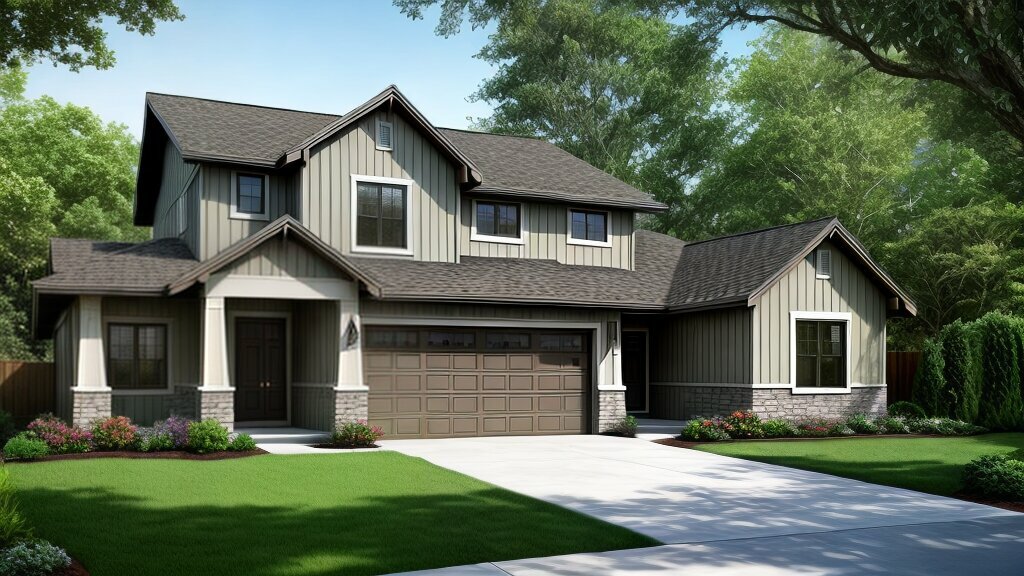


















Post comments (0)